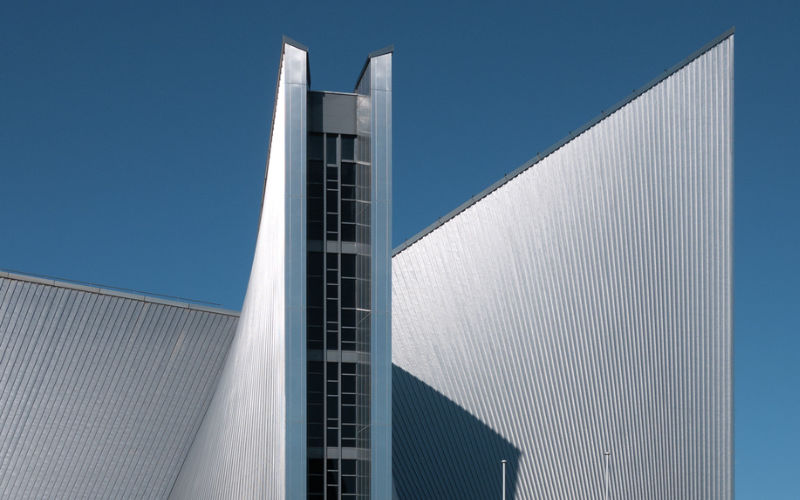Back | Blog posts overview
Resurrecting St Mary’s Cathedral
28/02/2022
In a city where Shinto shrines and Buddhist temples abound, a Catholic cathedral is an unexpected sight. Nonetheless, Tokyo's St Mary's Cathedral is one of the world's most famous churches. Designed in the early 1960's by master architect Kenzo Tange, its stainless steel-clad shape was ahead of its time – both in terms of its architecture and of the available technology of the day. To fix some of the resulting problems the cathedral was re-clad after 40 years with a molybdenum-containing ferritic stainless steel certain to last a lifetime.

© Nicole Kinsman
In the Catholic religion, a church is the literal House of God. Charged with designing a home for the divine, one of the century's greatest architects, Kenzo Tange, dreamed up a building unlike any before. However, his pioneering design, which included a skylight roof in the shape of a cross, was far ahead of the construction methods of the 1960s. Over time the sealant and galvanic separation failed, and rain infiltrated the church's Type 302 stainless steel standing seam roof, which also formed the walls of the building. This caused galvanic corrosion of the iron support structure beneath. By the early 2000s, the corrosion-stained stainless steel panels sometimes ripped off in typhoon-force winds because the clips holding them to the building has rusted. To ensure safety, the church needed prompt restoration. Architects, engineers and religious leaders joined to save the timeless structure. In 2007, it was re-clad with type 445J1 molybdenum-containing ferritic stainless steel, incorporating the modern building methods needed to recapture Tange's design with a more corrosion resistant alloy capable of withstanding the service environment.
Discover more ...
Back | Blog posts overview

